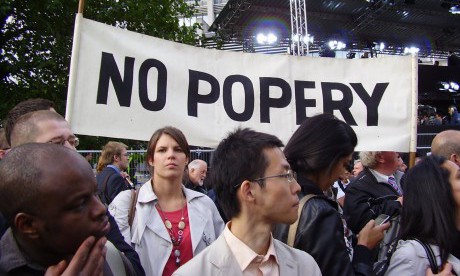For nearly 350 years, anti-Catholic bias was a reliable and powerful presence in the political and religious culture of the United States.
Today, when the Louisiana governor Bobby Jindal, for example, insists that Muslim immigrants ‘want to use our freedoms to undermine… freedom’, it can be easy to forget that for most of US history, Catholicism, not Islam, was the bogeyman against which Americans defined themselves as a free, noble and (some have said) ‘chosen’ people.
It was a desire to get away from what the English Puritan Samuel Mather in 1672 called ‘the manifold Apostasies, Heresies, and Schisms of the Church of Rome’ that drove the Puritans to Massachusetts in the 1620s and ’30s.
They believed that the Church of England was tainted by the remnants of Catholic theology, and they thought these ‘popish relics’ destroyed the freedom people needed in order to accept salvation from God.
Because Americans held onto this Puritan understanding of Catholicism for centuries, the idea that the founding of Massachusetts had been a bold bid for ‘freedom’ became an almost religious truth.
Even though people were actually executed and banished in colonial Massachusetts because they held ideas about religion that were considered ‘newe & dangerous’, schoolchildren still learn this myth in US classrooms.
In 1774, John Adams felt sorry for the Catholics he observed at a mass in Philadelphia. The ‘poor wretches,’ the future US president told his wife, were ‘fingering their beads [and] chanting in Latin, not a word of which they understood’.
A century later, the cartoonist Thomas Nast was less sympathetic on the pages of Harper’s Weekly. Nast’s Catholics in the 1860s and ’70s were violent and drunk ‘Paddys’ and ‘Bridgets’ too ignorant to think for themselves and dominated by priests who worked to obliterate the separation between church and state. Continue reading
Sources
- Aeon
- Image: The Skibbereen Eagle
News category: Features.




